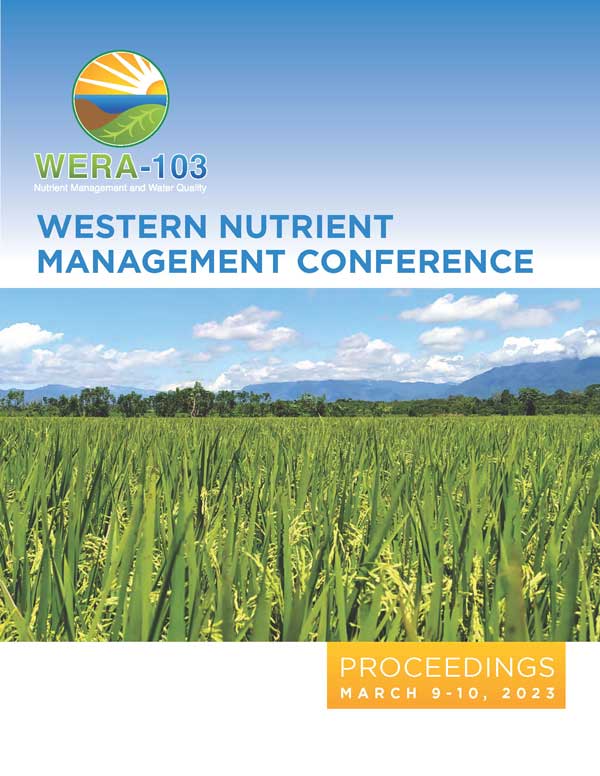Download the Conference Proceedings
Get your copy of the 2023 Western Nutrient Management Conference Proceedings today! Download the PDF file and view all of the available proceedings.
Proceedings
Authors
| Filter results1 paper(s) found. |
|---|
1. Twenty Years of Cotton Nitrogen Management and Cycling Trials in the Southwest: What Have We Learned?Over 20 site-years of nitrogen fertilizer management and cycling trials have been conducted in Lubbock Texas and Maricopa Arizona from 1998 to 2019. Furrow, overhead sprinkler (OSI), subsurface drip irrigation (SDI) were used. Soil profile nitrate (0-36 inches in Texas and 0-72 inches in Arizona) was sampled and tested for in all trials. Nitrogen-15 labeled fertilizer was used for two years in Texas and for two years in Arizona. Canopy reflectance was measured in every... K.F. Bronson |
